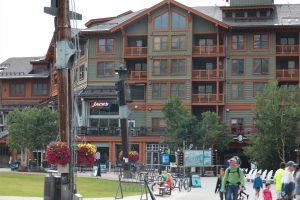Ask Eartha: How can home energy assessments help save money?
Ask Eartha

Getty Images
Dear Eartha, my neighbors told me they did an energy efficiency project that helped them save money last winter. How can I do the same thing at my house?
If you’ve ever struggled with high energy bills or cold drafts in winter, chances are your home is wasting energy. And that’s important because you pay good money for that energy. Fortunately, there’s a valuable tool for understanding how your home uses — and loses — energy. It’s called a home energy assessment. Consider it a checkup for your house. And this assessment is the foundation for making targeted improvements that can save you energy and money.
A brief history of home energy assessments
Residential energy assessments have been around since the 1970s, when the U.S. Department of Energy began developing programs to help homeowners reduce energy consumption during the oil crisis. Since then, energy auditing has evolved into a highly technical field, guided by national standards and best practices.
Locally, the High Country Conservation Center’s Energy Smart Colorado program provides discounted home energy assessments that follow protocols set by the Building Performance Institute — a national standards organization for energy efficiency. Building Performance Institute standards ensure the technician you work with not only identifies efficiency opportunities, but also helps you plan upgrades that support long-term durability, safety and comfort.
What’s included in an energy audit?
A Building Performance Institute-certified audit isn’t just a walk-through with a clipboard — it’s a comprehensive, science-based diagnostic of your home’s performance, health, and efficiency. Here’s what’s included:
- A full exterior inspection to assess siding, roofing, utility meters, windows and structural features that impact energy use.
- Efficiency testing of your home’s heating system to assess performance and identify opportunities for improvement.
- A blower door test uses a big fan to depressurize your home in order to locate hidden leaks. This way, you identify specific areas that need improvement.
- Use of a thermal imaging camera pinpoints cold spots and insulation gaps. You’ll get infrared pictures so that you can literally see where your home loses heat – and money.
- Health and safety testing, including checks for carbon monoxide, back-drafting combustion appliances, indoor air quality issues, and gas leaks.
The process takes a few hours, and afterward, you’ll receive a detailed, customized report. What does it cost? Homeowners in Summit County can get a full Building Performance Institute-certified audit for as little as $100 — a fraction of the typical $450 cost for most homes (for homes larger than 2,500 square feet, extra fees apply).
What happens after the audit?
It’s time to review the results. Your home’s assessment report doesn’t just highlight what needs fixing; it also provides a prioritized roadmap for energy-saving improvements based on your home’s unique characteristics. The best part? You won’t be on your own. High Country Conservation Center’s expert team will walk you through your report, answer your questions and help you take action. And even better, High Country Conservation Center will help you pay for your projects. That’s right — qualifying Summit County locals can get up to $5,000 to pay for the improvements recommended in their reports. Xcel Energy also offers rebates for efficient projects as well.
Keep in mind that you don’t have to do everything all at once. The audit report is your guide for planning. You might start with affordable upgrades like air sealing and attic insulation, and plan ahead for bigger projects like a heat pump or solar panels.
How do homeowners benefit?
First, comfort. Many Summit County homes — especially older homes— suffer from uneven temperatures, drafty rooms or overworked heating systems. By sealing leaks and improving insulation, you can make your home feel warmer in the winter and cooler in the summer — all while using less energy.
Second, savings. Heating is often the largest part of a home’s energy bill in our cold mountain climate. A well-insulated, airtight home needs less fuel to stay warm. That means lower monthly bills and long-term savings.
Ready to get started?
With another winter just around the corner, now’s a great time to take action. The first step is to sign up for a home energy assessment by calling High Country Conservation Center at 970-668-5703 or by visiting HighCountryConservation.org. Then, let High Country Conservation Center’s staff serve as your personal energy concierges to improve the efficiency of your home as easily and as efficiently as possible.

Ask Eartha Steward is written by the staff at the High Country Conservation Center, a nonprofit dedicated to waste reduction and resource conservation. Submit questions to Eartha at info@highcountryconservation.org.

Support Local Journalism

Support Local Journalism
As a Summit Daily News reader, you make our work possible.
Summit Daily is embarking on a multiyear project to digitize its archives going back to 1989 and make them available to the public in partnership with the Colorado Historic Newspapers Collection. The full project is expected to cost about $165,000. All donations made in 2023 will go directly toward this project.
Every contribution, no matter the size, will make a difference.









